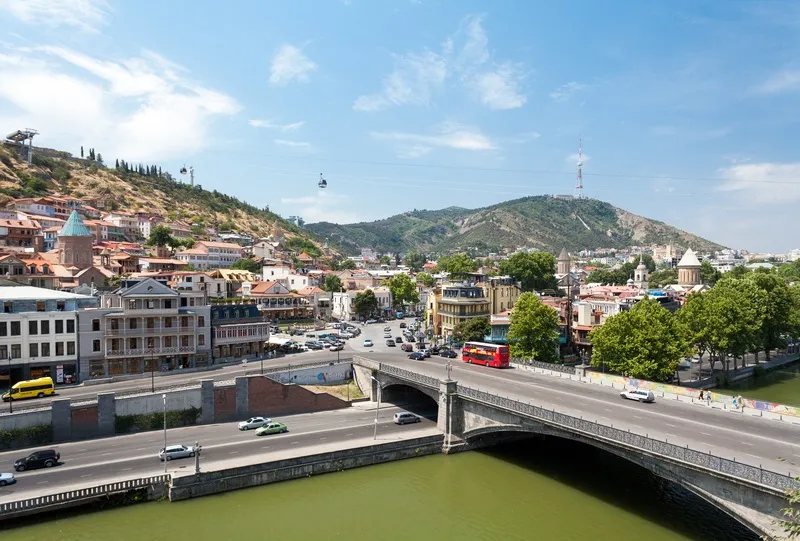With the capital’s population forecast to grow to 10 million people by 2030, and with much of this growth due to take place in east London, demand for crossing the river will increase. Unless new river crossings are provided in east London, the overall growth of this part of London will be affected and its economic potential will not be fully realised.
The Silvertown tunnel is a key part of the plans and is now progressing to the next stage with a consultation that starts on 15 October on detailed propos
October 14, 2014
Read time: 3 mins
With the capital’s population forecast to grow to 10 million people by 2030, and with much of this growth due to take place in east London, demand for crossing the river will increase. Unless new river crossings are provided in east London, the overall growth of this part of London will be affected and its economic potential will not be fully realised.
The Silvertown tunnel is a key part of the plans and is now progressing to the next stage with a consultation that starts on 15 October on detailed proposals. By delivering a new road link beneath the Thames, Silvertown tunnel would connect the Greenwich Peninsula with the Royal Docks – two of the Mayor’s key Opportunity Areas for thousands of new homes and jobs.
This consultation represents an important step forward for the Silvertown plans, with an application to Government for approval to build the tunnel planned for December 2015. In recognition of its significance for the future development of London, this project has been designated a Nationally Significant Infrastructure Project (NSIP) by Government. If approved, construction could start in 2017 and take four years to complete at an estimated cost of around US$1.2 trillion.
The Mayor and1466 Transport for London (TfL) are also planning for new road crossings to the east of Silvertown, which have been the subject of a recent consultation. Initial findings from this consultation suggest strong public support to develop plans for crossings at both Gallions Reach and Belvedere.
The Mayor of London, Boris Johnson, said: “The Silvertown Tunnel would provide a vital new link beneath the Thames from two of our city’s great opportunity areas for new homes and jobs - Greenwich Peninsula and the Royal Docks. It has quite rightly been classified by the Government as a project of national significance and today we’re a step closer in making our vision a reality. Unless new river crossings are provided, the huge growth potential of east London will not be realised, which is why I have asked TfL to also take forward further work on two new river crossings to the east of the Silvertown tunnel at Gallions Reach and Belvedere. These new crossings will be essential not just for east London, but for the capital as a whole and its continued success as the motor of the UK economy.”
Michèle Dix, TfL’s Managing Director of Planning, said: “The recent public consultations have been very important, helping us to identify the best solution for new river crossings. It is clear that public support for more river crossings is high. These detailed plans for the Silvertown Tunnel are the next step in delivering a series of crossings that will keep London moving. The consultation is an opportunity to find out more about the design of the tunnel, how it will be used and the benefits and impacts of this new crossing.”
The Silvertown tunnel is a key part of the plans and is now progressing to the next stage with a consultation that starts on 15 October on detailed proposals. By delivering a new road link beneath the Thames, Silvertown tunnel would connect the Greenwich Peninsula with the Royal Docks – two of the Mayor’s key Opportunity Areas for thousands of new homes and jobs.
This consultation represents an important step forward for the Silvertown plans, with an application to Government for approval to build the tunnel planned for December 2015. In recognition of its significance for the future development of London, this project has been designated a Nationally Significant Infrastructure Project (NSIP) by Government. If approved, construction could start in 2017 and take four years to complete at an estimated cost of around US$1.2 trillion.
The Mayor and
The Mayor of London, Boris Johnson, said: “The Silvertown Tunnel would provide a vital new link beneath the Thames from two of our city’s great opportunity areas for new homes and jobs - Greenwich Peninsula and the Royal Docks. It has quite rightly been classified by the Government as a project of national significance and today we’re a step closer in making our vision a reality. Unless new river crossings are provided, the huge growth potential of east London will not be realised, which is why I have asked TfL to also take forward further work on two new river crossings to the east of the Silvertown tunnel at Gallions Reach and Belvedere. These new crossings will be essential not just for east London, but for the capital as a whole and its continued success as the motor of the UK economy.”
Michèle Dix, TfL’s Managing Director of Planning, said: “The recent public consultations have been very important, helping us to identify the best solution for new river crossings. It is clear that public support for more river crossings is high. These detailed plans for the Silvertown Tunnel are the next step in delivering a series of crossings that will keep London moving. The consultation is an opportunity to find out more about the design of the tunnel, how it will be used and the benefits and impacts of this new crossing.”








